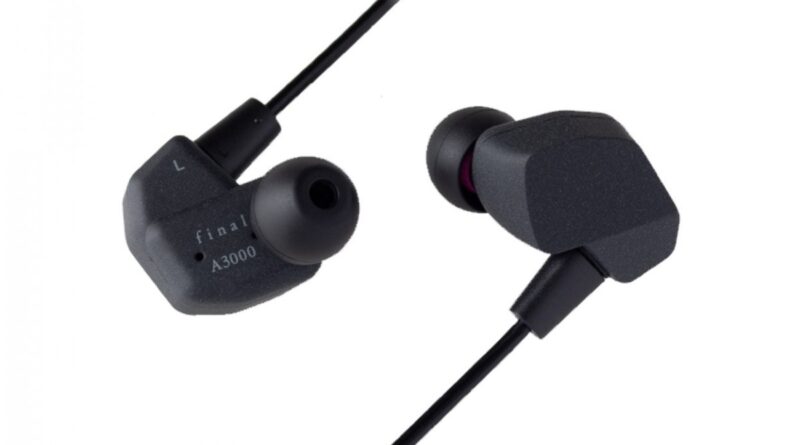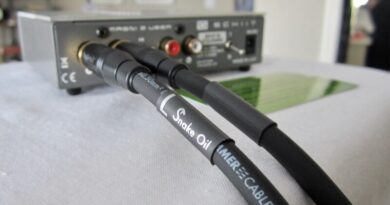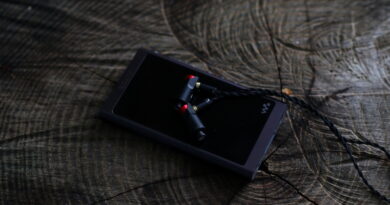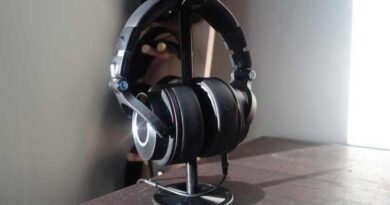A3000 – Another final Quality Lesson
This article is to refer on my consolidated experience with the first of the two most recently released final IEMs called A3000.
In this Article
Introduction
As its company cipher, final puts a significant research effort in each product in the first place. A3000 has been conceived and developed as an evolution of their A series, which started last year with flagship model A8000. Also last year, the B range was also introduced by final.
According to final, both A and B IEM lines are different stems off a single base-concept: instead of trying to develop a mythical (read inexistant) “perfect all rounder” earphone, final considered how different types of music call for different presentation features, and went from there.
Sound design for these models has been undertaken with attention to the relationship between spatial impression and dynamic range of music, and the physical characteristics of earphones and headphones.
We have categorized sound creation on music recording onto these two axes: spatial impression and dynamic range.One way of thinking regards the distance perception. Classical and jazz recordings are thought to be performed with emphasis on aspects of spaciousness, such as sense of distance, broadness and reverberation. On the other hand, rock, pops and many of the recent animation soundtrack recordings, spaciousness is not as highly emphasized. There is thought to be greater emphasis on clarity, which brings the various instruments and vocals to the front.
Another approach is dynamic range – in other words, changes in loudness over time. If the dynamic range is wide, naturally it is possible to use the change in loudness over time to achieve a more dynamic expression of music. But, there are some types of music for which narrower dynamic range recordings are preferable to allow each of the instruments and vocals to ordinarily appear before the listener’s eyes.
The difference between these two ways of thinking pertains not to which is superior but rather differences in how music is composed and what is demanded of it. With regard to classical music, and that played by orchestra in particular, the spatial orientation of instruments is particularly important. Stringed instruments are positioned nearest to the audience with wind and percussion placed behind them.
Should the balance between the spatial orientation and volume of each group of instruments collapse, the music would disintegrate. For that reason, uniform clarity of sound that allows each instrument to appear before the eyes of the listener is not demanded of this type of music. Even for classical music, a string quartet, for example, would have a narrow dynamic range and the clarity of each instrument would be more prominent. For rock and pops on the other hand, spaciousness is not as necessary as for classical music, and so there is greater emphasis on clarity than spaciousness.
These preconditions are very important, particularly for earphone and headphone listening, and it has become apparent that the implementation of appropriate target curves and driver design result in deeper enjoyment of music.
https://snext-final.com/en/products/detail/B1
TL;DR – for classical and jazz music soundstage and imaging are more important than single sounds definition; the opposite is true for pop & rock.
Moving ahead:
The development of the A series began with the establishment of a new evaluation method by analyzing the relationship between sound quality and physical characteristics, and the result was the A8000. The A3000 has further evolved that evaluation method. We listen to music recorded in different qualities at different volumes.
However, in the conventional evaluation method, it is common to perform subjective evaluation under the condition that the sound pressure that presents the sound is fixed, and it is difficult to judge a good sound that matches the actual product audition. Therefore, as a result of a new research targeting an evaluation method that matches the actual music listening situation, we believe that we were able to produce a product that can be said to be the definitive edition in this price range.
https://snext-final.com/products/detail/A3000
Less elegantly, more vulgarly explained: you like listening to AC/DC? You’ll surely want huge loudness similar to what you experience during one of their concerts. Now tell me: when did you ever encouter deafening high sound volumes (a.k.a. SPL) at a jazz club?
A3000 is not for extraloud, supermeaty, iron-strong AC/DC sound. Hard rock lovers: you can quit now 🙂
With A3000 …
Each note is localized so that it emerges with a contour in the low range that spreads slowly, and you can vividly hear the fine touch of the guitar and the delicate vibrato of vocals. Since you can notice the detailed nuances of the music, new impressions will be created from the playlists you are familiar with.
https://snext-final.com/products/detail/A3000
Quite poetic.
Is it exactly like that? Well not “precisely” like that at least for my ungolden ears, or maybe for my unplatinum gear, or both. But one thing is sure for me and is that A3000 is a superb natural-clear-flavoured proposition in the market of classical / jazz / unplugged specialized drivers.
At-a-glance Card
| PROs | CONs |
| Phenomenal imaging on a 3D soundstage. | Not recommended for musical genres requiring strong, pulpy & loud presentations e.g. hard rock, EDM etc. |
| Even more phenomenal masterful treble tuning offering countless and superbly polished details. | Requires at least some amp power, can’t pair with most phones and lowend dongles. |
| Scales well with source quality, up to a really stunning level. | Uncommon (although not proprietary) cable connector format. |
| Full bilateral extension. | |
| Super-snappy transients, in the same league of a planar driver. | |
| Recessed shaped 2pin female connector guarantees stability and polarity. | |
| Pairs wonderfully with inherently unplugged genres e.g. classical, jazz and some prog rock | |
| Huge value for the money |
Full Device Card
Test setup
Apogee Groove / Questyle QP1R / Sony NW-A55 mrWalkman – JVS SpiralDot tips – Stock OFC cable – lossless 16-24/44.1-192 FLAC tracks.
Signature analysis
| Tonality | A3000 tonality is neutral with a bump in the mids, let’s say a centrally accented W shape. Trebles are amongst the stars of the show yet tonality is not bright. Timbre is clear & clean (which might be mistaken for brightness). Transients are lightning fast all accross the spectrum, same speed league as a planar driver. |
| Sub-Bass | Fully extended, very fast and totally un-enhanced. Sub bass notes are all there where they belong, yet nothing is pushing to take a millimiter more of space on the scene. |
| Mid Bass | Un-enhanced, moderately punchy, nicely textured and detailed thanks to razor sharp transients. |
| Mids | Unrecessed in the low part more forward in the high part, detailed, lean, transparent/uncolored. Highmids in particular are incredibly well managed for how sparkly they are. |
| Male Vocals | Detailed, lean and quite transparent. They sound natural, might even say too natural, naked, as there’s no concessions to enhancement, which might come out a bit punishing on baritones for example. |
| Female Vocals | Similarly to males, females are also clean and clear and I can’t call them thin, although they’re certainly not lush, let alone flowered. Unsibilant in site of all that vividness and clarity. Amazing. |
| Highs | Superbly present while at the same time you never can call them artificial. They come out into an absolute natural sensation, and that’s the section where the difference is more evident with other IEMs which choose (or need) to tame them the section to avoid shoutyness, or surrender to various bright added flavours, ending up in plastic, metallic or other colorations. A3000 trebles sound natural, complete, clean, brilliant. Extension into the high octave is also very smart: it is there – big time – but relative peaks are fully controlled and nothing breaks the magic. A3000 is the single most trebly driver I would not call bright, let alone screechy or shouty. |
Technicalities
| Soundstage | Very extensive in width and height and just a bit less in depth. This and imaging are the 2 aspects which will scale most with source quality, yet A3000 already offers good stage delivery even on quite entry level amps. |
| Imaging | It’s from another world, especially if your source is also of good quality – but like soundstage it’s already very good on “common” medium-tier sources. The entire space around the listener is blossoming with instruments and voices, each one presenting a host of details that you might easily happen to never have noticed before. |
| Details | Yet another masteful achievement: details are so many, so precise and blossoming everywhere, while at the same time not too thin, and not too many, which is one of the typical shortcomings on cheap “highly detailed drivers”, mesmerizing at first but quickly overwhelming with information that make it indeed harder to following the musical story. |
| Instrument separation | A3000 separation and layering also are great. Pushing amp volume too high might make them fuzzier, especially depending on amp quality. |
| Driveability | Although impedance is not excessively low, sensitivity indeed is low and this calls for an at least somewhat powerful source. Usual phones are off, so are entry level dongles and such. On the other hand, usual desktop amps will screw the presentation for the opposite excess. Use of an iEMatch or similar attenuator is imperative in those cases. Excessive power apart, A3000 is quite forgiving in terms of source quality: its presentation results in good output even on entry level sources: on (say) an Hiby R3Pro A3000 is nice and ok, while it gets breathtaking on Apogee Groove, and even on Sony NW-A55. |
Physicals
| Build | The ABS resin material appears fully resistant to normal solicitations. Recessed and notched cable connectors are on one hand a great choice to guarantee solid grip and correct polarity insertion as well, on the other hand most budget-bracket 3d-party 2pin cables won’t fit. |
| Fit | A 3-contact-point fit between the housing and the concha has been designed by final aiming at offering the best compromise between wearing firmness and light stress accumulation over time. I would say that works as intended. What I find sub-ideal is the nozzle length which is a tad too short and make tip selection picky. In my case the trick is choosing a bigger size for the left ear: that way I do get a firm seal even if the tip stops “just in” the canal, relieving the need to push the housings too much into my left concha. |
| Comfort | A3000’s particular housings size, their 3-point-fit design, and their external finish all contribute to a great comfort once the right “personal” position is found. |
| Isolation | Good passive isolation once housings are properly fitted |
| Cable | A3000’s stock cable “looks” underwhelming at first but I frankly can’t say anything bad about it both mechanically and sound wise. Due to the aforementioned recessed 2pin receptacles issue I could only try just one alternative cable (Nicehck 23AWG High Purity OFC) which is sound wise a worse pair (modestly enhances highmids which is not good on A3000). I’m planning to order a 3rd party high purity copper with the right plugs soon and test that. Regardless, stock one is 100% decent at the very least. |
Specifications (declared)
| Housing | ABS resin |
| Driver(s) | Single 6mm “f-Core DU” proprietary-design Dynamic Driver. “The material of the driver front housing is brass, which is less affected by magnetic force and has a higher specific gravity than general aluminum. In order to improve the time response performance of the diaphragm, the voice coil uses an ultra-fine CCAW of 30μ, and the moving parts are thoroughly reduced in weight by assembling with the minimum amount of adhesive. Furthermore, the diaphragm is carefully pressed in a small lot of about 1/3 of the normal size to minimize pressure bias and realize uniform diaphragm molding without distortion.“ |
| Connector | 2pin 0.78mm, recessed connectors. A notch is present to guarantee plugging terminals following correct polarity |
| Cable | 1.2m Oxygen Free Copper, single-ended 3.5mm termination |
| Sensitivity | 98 dB |
| Impedance | 18 Ω |
| Frequency Range | Undisclosed |
| Package & accessories | Silicon carry case, E-series black eartips (full series of 5 sizes), type-B final earhooks |
| MSRP at this post time | JPY 12.800,00 ($ 125,00) |
Conclusions
By design (!) final A3000 is supposed to be the opposite of an all rounder, and superbly fine-tuned for its intended application – which, in my experience, is a 100% achieved target.
Even beyond that, very simply put I auditioned no other natural/clear-tuned IEM under €150 which didn’t come with at least one or more of the following inconveniences: driver incoherence, lack of balance, excessive brightness, excessive presence trebles, sibilance. Avoiding all of that at the same time, and doing it at the asking price for A3000 must not be so easy, as it evidently takes a company like final – and for now, to my knowledge, no other – to deliver on that.
Applied to unplugged, acoustic tracks A3000 delivers nothing short of stunning clear sound, imaging and layering, which makes each instrument’s voice in the band pop out with unique authority. I just love how they sound.
Clarity and neutrality being their main cyphers, mid bass and sub bass come accross un-enhanced. A3000’s calibrated precision and emotion, detail and musicality nevertheless are by far the best match I ever auditioned until today applied to cool jazz, under € 150 asking price.
If a punchy, razor-sharp and meaty contrabbasso is a priority when listening to hardbop, A3000 won’t deliver on that. It takes however a pretty penny to have that properly executed, without losing too much on the other counts of course – more precisely I got this on Ikko OH10 for almost twice A3000’s price, or final B3 for more than 3 times that.
Disclaimers
Oh before I forget … A3000 like all of the other final IEMs I own and use are a direct purchase. I did not receive those as sample units, I am not a final reviewer, I have no commercial relations with them (other than being a paying customer of course). At the time of this article, they were solely available from final’s direct shop.
Our generic standard disclaimer.
This article already appeared on my personal audio blog, here
P.S. – Just for the record, as any truly affectionated user already knows, spelling final Co., Ltd. lowercase (“final”) is not a typo 🙂
You find an INDEX of our most relevant technical articles HERE.












Hey there Alberto…trying to engage a conversation however brief at Audio Reviews here seems a loser’s game – have only ever seen it done *once*, with an exchange on (the idea of) ‘Western’ vs ‘Asian’ ears. But nonetheless I’d like to say I really appreciate the vigorous and most flavoursome way you write, and was floored how you even anticipated my thought, above, when backing up your use of the lower case ‘final’. I had to laugh though, at their proposing “sounds appearing before the listener’s eyes”… final seem to be huge in Japan, at least their marketing certainly is – on Yodobashi 4th Floors the word is emblazoned (all caps) across veritable acres of floor area, they seem to be aiming for something like ..Subaru of the portable audio world (if Audio-Technica is the Toyota?) Anyhoo, even though i adore high-volume guitar driven things (but would never, ever go near that wretched, screeching Aussie noise!), you’ve piqued my interest in these irrevocably now, and for that I thank you. If i may end with somewhat of a platinum platitude; keep up the GOOD WORK!
Hey Don what can I say… thanks to you, indeed! 🙂
Final (caps here, as it’s at the beginning of the paragraph 😉 ) is definitely trying a “different way” – both in terms of marketing and engineering.
Until now I auditioned a total of 12 different final IEMs and HPs, 9 of those I actually own and 5 are part of my (ir)regular rotation.
Talking about those three I tried and did not keep, A4000 is the sole one that – although spectacular – doesnt match my taste: its timbre is definitely toooooo clear for me.
B1 and B3 are both glorious each in its own field, I just happen not to have available budget (for now!…).
Ciao Alberto!
Which one Final model I can choose for rock/hard rock/progressive rock – heavy metal/progressive power metal – fusion genres?
Thanks for your reply!
Ciao Vasarely
it’s all very much subjective of course but for rock & progressive I would dare suggest E5000. But mind you: finding the right source for those is *not* easy, and when the source is not appropriate they sound (too) dark. Example of superb portable sources for those: Questyle QP1R or (by trusted rec) Cowon Plenue R2. Example of above decent portable source: Sony NW-A55. Example of near-superb desktop or semi-mobile source: Apogee Groove.
Fusion – meaning jazz rock I presume – can be subject to wider preference alternatives: if you like the “rockier” part of it, I’d still say E5000, or E4000 (mellower), or B1 (more expensive). If you like to push the “jazzier” part of it I’d say B3 blind-eyed, or even A3000 why not.
Heavy metal / prog metal is not my cup of tea so I won’t be able to seriously help there 🙂
Enjoy!
Hi Alberto,
Really a good review. I am stuck in between which one to between A3K vs A4K. I mostly listen all genres of rock starting from acoustic to metal. I care more about timbre and musicality of an IEM. Which one do you think should I choose
Hello. It’s all a matter of personal tastes, and the more so in this particular case.
See, if I were a rock lover I would probably not choose any of the A series in the first place – their note weight being all too “slim” to pair coherently with that genre’s “nature”, at least for my history, culture and therefore expectation.
For acoustic rock / progrock (say… Genesis) I’d gladly accept some compromise on layering in exchange for a more “rock-resonating” timbre so I would probably go for final E4000, tanchjim Oxygen, Intime ShoDD. E5000 an option ONLY IF you can afford – both from the economic and logistic standpoints – a suitable source.
Hard(er) rock (grunge, punk, metal) is where it gets tricky as the mess those authors do with apriori overexhalted bass kinda segment the audience. Who wants to enjoy them “as they hear it at one of their concerts” (where _distortion_ is king…) by definition will NOT want an audiophile solution, which is why they often keep sticking on “classical DD tuning” in the lowends etc. Viceversa, those who dig for good separation and layering even in those situations will want faster transients in the low end, and a non-excessive presence treble while still keeping high octave up (otherwise the whole stage collapses to room size).
That’s a situation where some would go for final A3000 (not A4000 – too ethereal – nor A5000 – treble would go shouty), and I would also consider an alternative I recently assessed – that being Simgot EA1000. Should money not object, however, I would probably settle onto final B3.
Hope this helps 🙂